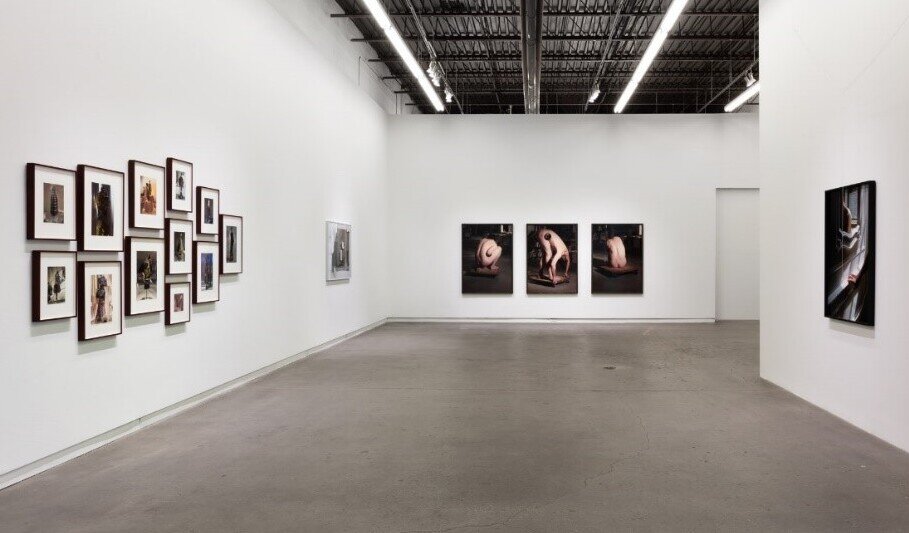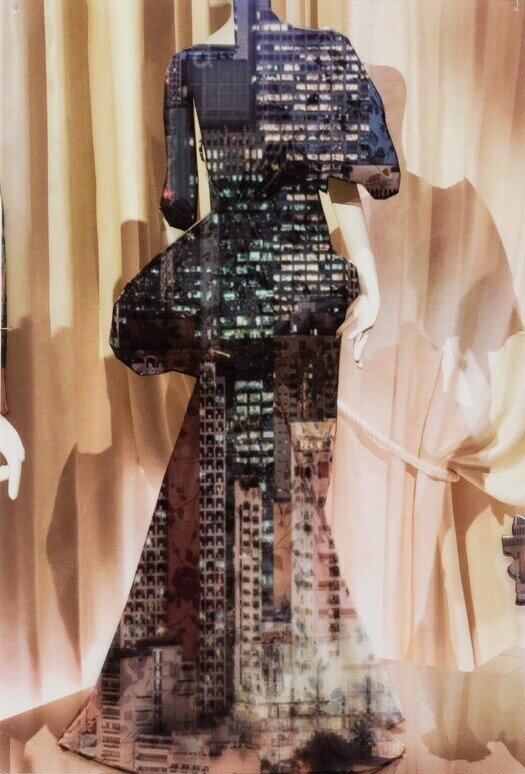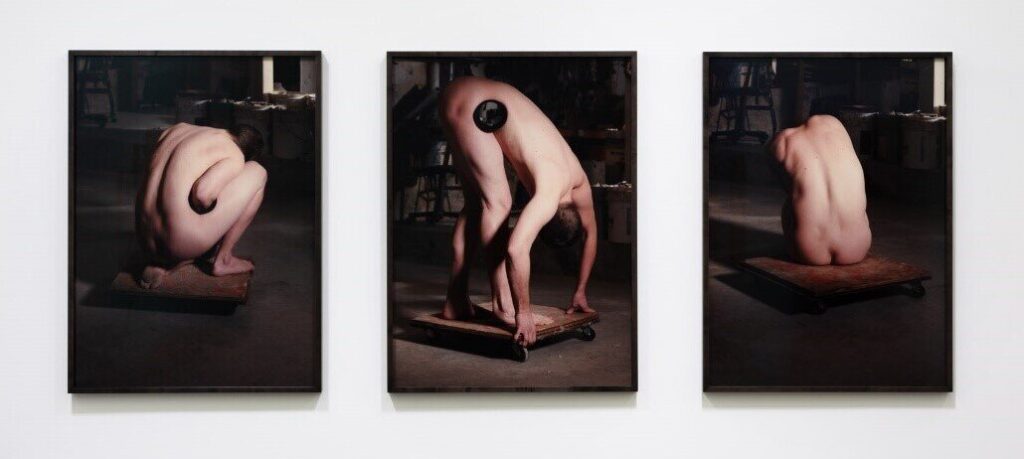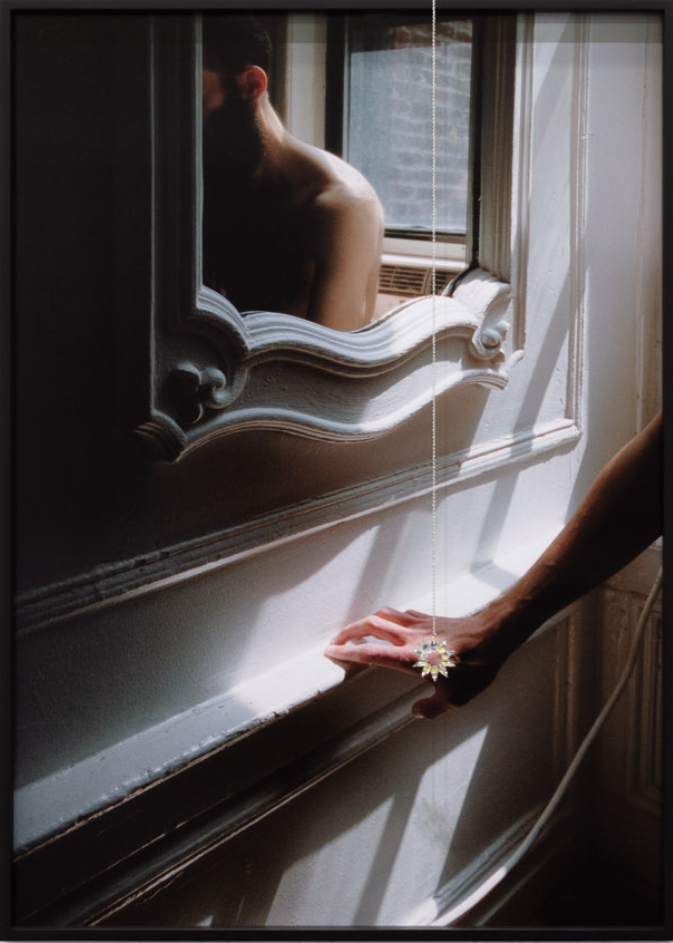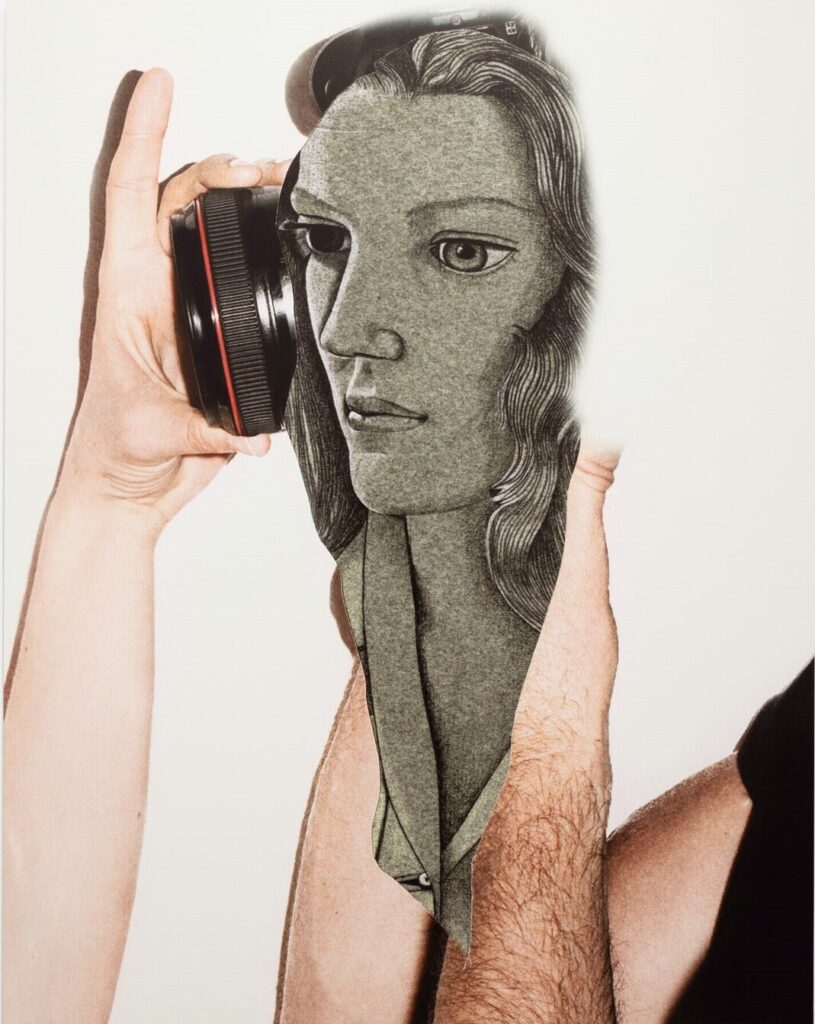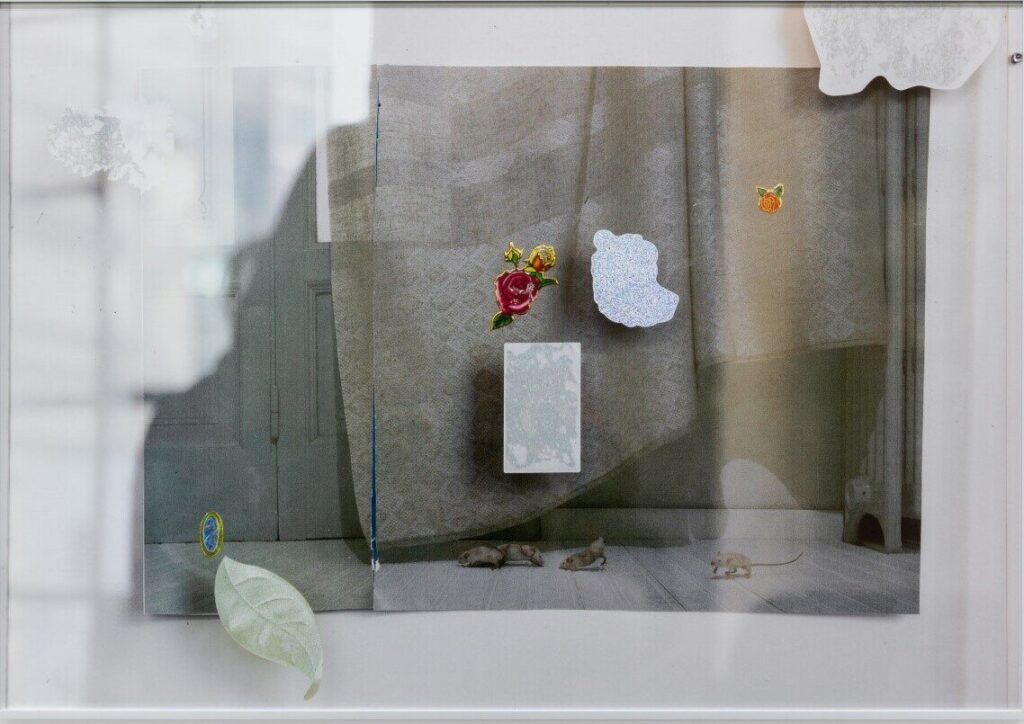Photography is hard? It’s never been easier to take pictures. No settings, no focus. Point. Shoot. Done. We take so many that three quarters of digital photos are never looked at again. For the one quarter that are keepers, easy to use filters elevate the mundane closer to perfection. Taking photos is not hard.
But, making photographs that are engaging, making images that attract a viewer’s full attention, making something that stands out in an oceanic flow of images – now that is hard.
Photography is Hard at Daniel Faria Gallery showcases work that transcends this difficult threshold. It presents photo-based work that manages to be engaging and enigmatic. It’s a show that starts you off thinking you know what we’re about to see and then trips you up, leaving you wondering: what exactly are you looking at?
Installation view of Photography is Hard at Daniel Faria Gallery
In Shannon Bool’s series of images, you first see silhouettes of mannequin-like figures. The images are from fashion illustrations, but the models and their clothes have been replaced by images of dense cityscapes. At first impression you might think this to be a Photoshop collage. Only when you look very closely do you perceive how they’ve been put together. The images are physically layered. The fashion images are printed on paper and the urban images are overlaid on transparent film. The layers are held together by delicate, tiny stitches of thread. It’s only at the edges and the corners that you find clues to the construction of these collages.
Shannon Bool, St. Manilla, 2021, fine art print on Baryta, fine art print on transparency photo film, 13.2 x 9 in
In Chris Curreri’s large tryptic, three images of a body are revealed in sharp chiaroscuro. In each image, the face is turned away from the camera and the shapes and geometry of the contorted body are the primary focus. It takes a while before you notice some curious anomalies. Does that arm in the left image seem to go through the body? And in the central frame, can we see through the black circle to the back of the room? Surely some digital manipulation is at play here. But no, the model, a simple black tube, and the camera have been aligned in such a way that it only appears to be impossible. The unadorned studio setting underscores the lack of technical artifice.
Chris Curreri, Model in the Sculptor’s Studio, 2010, chromogenic prints, 56.4 x 41.4 in (each)
In Steven Beckly’s The Rescue the star shaped pendant is not in the photograph but is a physical object suspended in front of it on a silver chain. Like a cat chasing a shiny bauble, we’re drawn into the image. Behind the picture plane, we follow a hand behind the pendant. We’re flipped around through another frame, this time a mirror, to follow the arm further in. Over the shoulder there is yet another frame, this time a window to the outside. The experience feels cinematic and animated even though we’re looking at a still image.
Steven Beckly, The Rescue, 2020, framed photograph, silver chain, crystal, 42.75 x 30.75 in.
The title of the show borrows its name from a photo collage by Elizabeth Zvonar. The central image of Photography is Hard is a reproduction of a drawing by Lucian Freud. One eye gazes diagonally past us while the other eye is darkened. The drawing has been cropped and placed over a background image of three arms outlined by the thin sharp shadows of a camera flash. Obscured by the collaged face and a white blur, two of the arms may be holding a camera while the third hand appears to focus the lens. Or are the two central arms manipulating the head, controlling the direction of the gaze? Is the raised finger and the lens drawing attention in a different direction? The image simultaneously invites and frustrates interpretation.
Elizabeth Zvonar, Photography is Hard, 2019, digital inkjet print on Baryta, mounted on dibond, 58.5 x 46 in.
Viewed on a screen, you might assume that the shadows and reflections in Nadia Belerique’s work are the inadvertent result of documenting the piece in a daylit space. But those spectral artefacts are part of the image. Light, reflections of the background, and the artist herself become compositional elements. In her studio, Belerique has staged an assemblage of images and stickers mounted on a wall, as well as on a piece of glass in front of the wall. Up close, the artist shows you how it’s all been put together. Some of the stickers are reversed and you can see the glue side. There’s tape visible and the image with the mice curls away from the wall. Shadows reveal the distance between wall and glass. But even with the process exposed, the illusion persists. From across the room, the photograph looks three dimensional, like layers of glass or resin.
Nadia Belerique, In The Belly of a Cat Part 2, or Run, 2018, inkjet print on dibond, 34 x 49 x in.
Try and see this show in person. There’s more to these works than an online preview can convey. The work is rooted in photography, but the pieces have physical and material qualities that extend beyond what can be experienced on a screen. As varied as the practices of these artists are, one thing they have in common is that their work tells the story of its making. We don’t just see the finished pieces, in addition to the implied presence of a camera, you also perceive the presence of the artist.
Mikael Sandblom
Images are courtesy of Daniel Faria Gallery
*Exhibition information: Photography is Hard Group exhibition showing artworks by Steven Beckly, Nadia Belerique, Shannon Bool, Chris Curreri and Elizabeth Zvonar, August 7 – September 25, 2021, Daniel Faria Gallery, 188 St Helens Ave. Toronto. Gallery hours: Tue – Fri 11 am – 6 pm, Sat 10 am – 6 pm.

